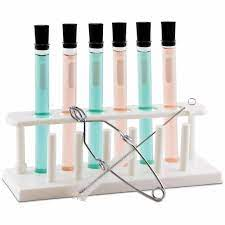Test Tube Babies - Artificial Children?
- Radha Bhor

- Aug 5, 2022
- 2 min read
Creating embryos in test tubes using sperm and eggs has been going on for a long time and it has greatly increased over the past five years. More and more people who suffer from infertility are able to afford to artificially implant embryos.
Recently, researchers have begun to expand their knowledge about this process and have been doing experiments to try to create an embryo without using sperm and eggs. Scientists have created a mouse embryo model that is made out of embryonic stem cells and does not contain sperm or an egg or a uterus. This embryo lasted around eight days, which is a significant increase from previous experiments. The embryos were around 95% to real functioning mouse embryos.
The process of making artificial embryos is difficult and complicated. In order to create an embryo without using sperm and egg it is important to replicate the conditions in which an embryo is formed and to use the proper type of cells that will be able to facilitate the growth of the embryo. Scientists discovered that naïve pluripotent embryonic stem or induced pluripotent stem cell lines were perfect to create embryos. Earlier, researchers used embryonic stem cells and stem cells taken from the trophoblast layer but most of the embryos did not fully form. New research shows that scientists could use extraembryonic cells and embryonic cells to make an embryo like structure.

In late 2021, scientists were able to advance their research further and their embryos went to the blastocyst stage. The most recent findings show that the first stages of organ development were spotted in the embryos. There are a few limitations to this process. The placenta, which is the most important place for embryonic development, is hard to mimic, which changes the results from experimental embryos. Although it may be easier and cost less to grow embryos without using sperm and egg, it may raise ethical concerns and will not be desired by the general public .
Over the past five to ten years, embryonic research and development has come a long way. Scientists are looking for ways to make it easier for couples to expand their families. Infertility is one the United States largest issues, and it is important to find more accessible ways to create a child.



Comments